From the May 2024 issue of Apollo. Preview and subscribe here.
The so-called golden age of Meissen, Europe’s first producer of porcelain, is closely associated with two names: Augustus II the Strong (1670–1733), Elector of Saxony and King of Poland, and the court sculptor and master modeller Johann Joachim Kändler (1706–75).
After the invention of European hard-paste porcelain by Johann Friedrich Böttger (1682–1719), Augustus founded the Meissen porcelain manufactory in 1710. The quality of the products had already reached such a high level by the mid 1720s that Augustus was able to realise his vision of turning the Japanese Palace in Dresden into a porcelain palace. The furnishings were also to include life-size animal sculptures in porcelain, which he commissioned from his manufactory.
Kändler had worked on the construction of the Dresden Residence and was appointed court sculptor by Augustus in 1731 because of his talent and assigned to the Meissen manufactory as a modeller. Here, Kändler first had to familiarise himself with porcelain, a material that was completely new to him and had very different physical properties to stone.
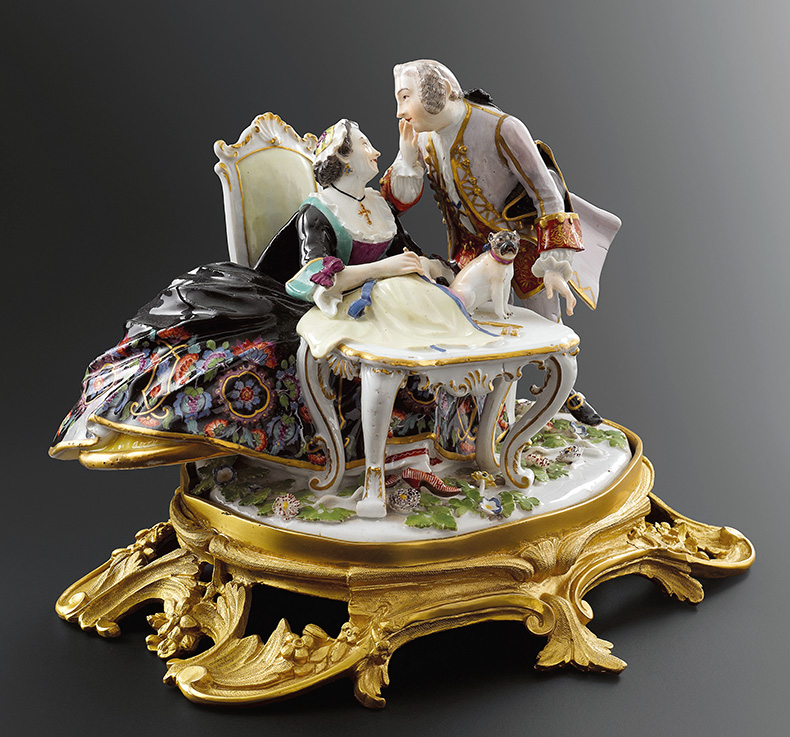
Masonic couple (c. 1744), modelled by Johann Joachim Kändler and manufactured by Meissen in c. 1745. Private collection. Photo: © Hughes Dubois
The challenge was to fire animals of a large size without damage and cracks appearing during the process. This was quite apart from the prospect of the model collapsing as it fired: in the heat of the kiln, porcelain first softens to the texture of butter before it hardens. Yet he found a way to manage the commission, even if the palace couldn’t be completed within Augustus’s lifetime.
The new elector, Augustus III, did not pursue the porcelain palace project with the same enthusiasm as his father, whose orders were still being processed but not expanded. This gave Kändler the opportunity to devote himself more to small sculptures from 1736. In this year, he created the first of his famous ‘crinoline groups’, named after the fashion for wide skirts, which were brought into shape with a fishbone frame.
One striking example of these groups is this figurine, part of the exhibition ‘Magnificence of Rococo: Kaendler’s Meissen Porcelain Figures’ at the Wawel Royal Castle, Krakow (24 May–29 September). The object illuminates both the work of Kändler as an artist and the processes behind Meissen as a factory. From the outset, Augustus wanted the factory to be profitable. It was never conceived as an atelier but was designed to have a smooth workflow where everything could be done efficiently and quickly.
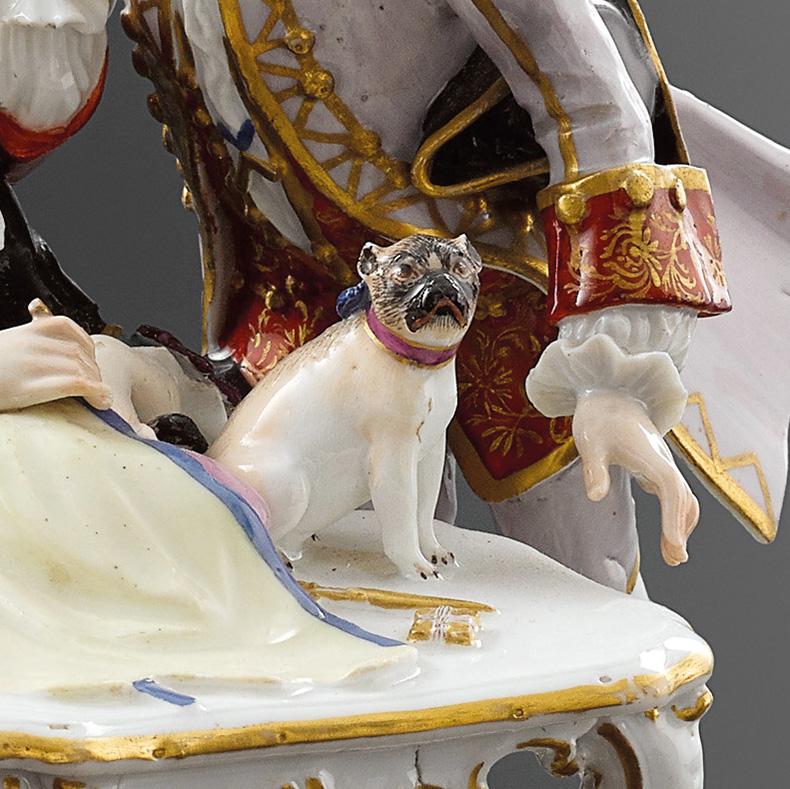
Masonic couple (c. 1744; detail), modelled by Johann Joachim Kändler and manufactured by Meissen in c. 1745. Private collection. Photo: © Hughes Dubois
By creating his cabinet pieces – which included not only the crinoline groups but also the famous monkey orchestra and the commedia dell’arte figures – Kändler satisfied precisely this demand on the porcelain manufactory. (It was just one of the 26 manufactories founded by Augustus II during his reign; others produced mirrors, guns, damask and tapestries, to name but a few.)
Meissen is renowned for its detailed documentation, much of which has survived. But many of the cabinet pieces don’t appear in the daily working reports, which largely logged orders from the king and other members of the nobility. These figurines were created in Kändler’s spare time as he was convinced that he could sell them. When they do appear in the documentation, it is with the sentence ‘made for the warehouse’ – this is Kändler creating stock from which a customer could choose to buy. Due to their popularity, they soon found their way into the royal collections too.
This particular example shows the humour and humanity that made them so attractive. Here we have a Freemason caught at the point of intending to kiss a woman who sits at a table sewing an apron. We know that he is a Freemason from the angle of his collar – the Freemasons identified themselves through the tools of actual masons. The apron, while merely ceremonial for a Freemason, is another symbol borrowed from the profession of masonry. The pug, who might at first appear to be just the lap dog of an aristocratic lady, frequently appears in works like these as a sign of loyalty, reliability and steadfastness, qualities that were supposed to define the Freemasons. But it might also be considered an allusion to the para-Masonic society known as the Order of the Pug, established by Roman Catholics in response to the papal bull of 1738, in which Pope Clement XII banned Masonic groups under pain of excommunication. The Order of the Pug differed from the Masonic brotherhood in allowing women to join.
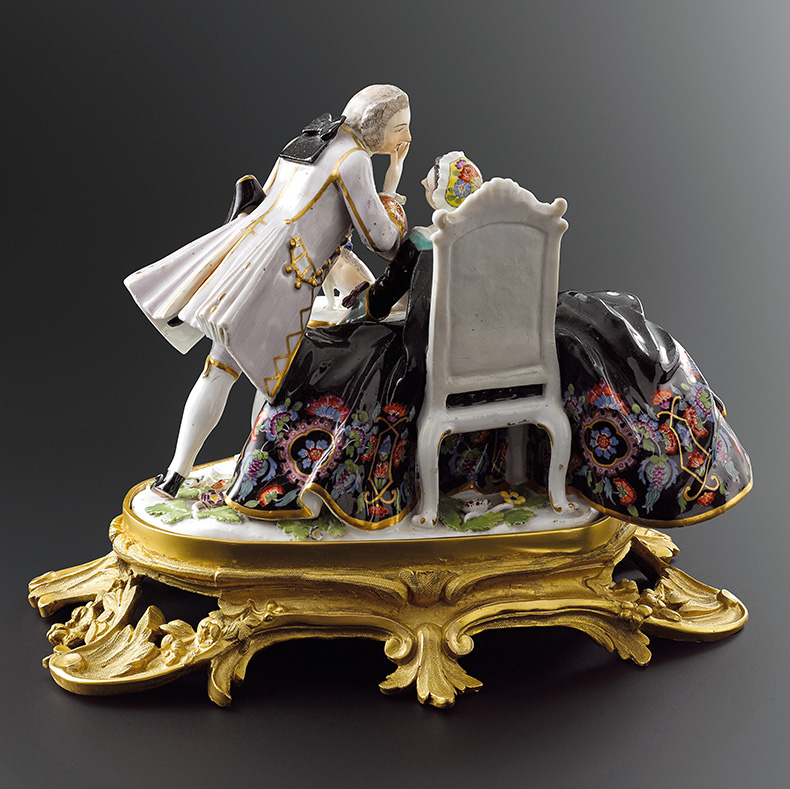
Masonic couple (c. 1744), modelled by Johann Joachim Kändler and manufactured by Meissen in c. 1745. Private collection. Photo: © Hughes Dubois
Kändler’s lightness of touch in creating character makes these figures so enjoyable, but they also have an extraordinary technical dimension. First, the sculpture is modelled in clay, from which plaster moulds are made. These moulds are then filled with liquid porcelain, which is left to solidify. Each sculpture is composed of parts from up to 40 or 50 individual moulds: an arm might be made from two pieces, while a hand requires its own mould with a separate form for the thumb. Once these parts have been moulded one by one, they are painstakingly joined together, a highly skilled job.
It takes years of training to achieve the ability to assemble the individual pieces without the seams remaining visible. The clay must be left to dry, sometimes for several days, until it is ready for the first firing at around 900oC. After its first firing the figurine is strong enough to be glazed and then fired at around 1,400oC. This second firing causes shrinkage of about 16 per cent, so the modeller must bear in mind that whatever he creates will end up smaller. Now the pristine white figure is ready to be decorated with polychrome overglaze.
The decoration was carried out by a so-called staffage painter, who was specially trained to paint porcelain figures. These painters chose the colours and patterns so that various examples of the same group could be decorated quite differently. Despite this, the figures are not signed by the painter.
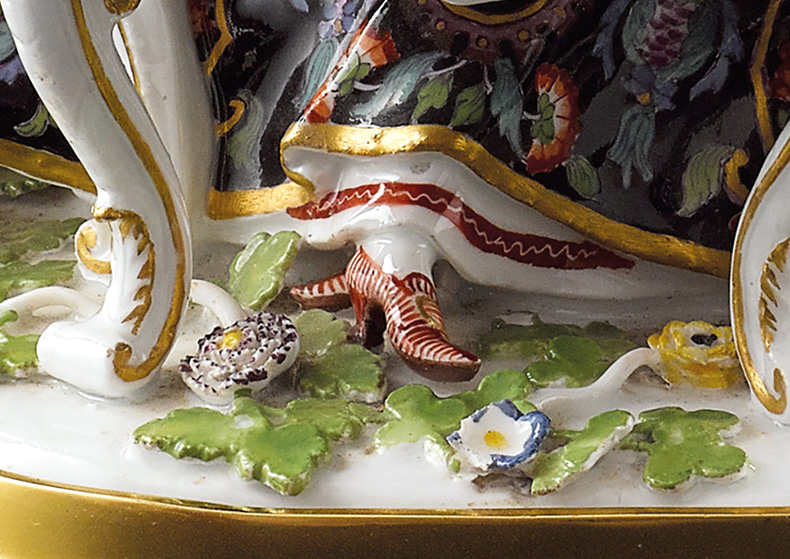
Masonic couple (c. 1744; detail), modelled by Johann Joachim Kändler and manufactured by Meissen in c. 1745. Private collection. Photo: © Hughes Dubois
Today, when such a figure is painted, there is always a painting sample on the worktop so that the painter can see how it was done in the 18th century. To decorate a figurine with the elaborate detail that is evident on the woman’s dress requires a craftsman with a calm hand and a steady brushstroke, who has mastered the skill of bringing the animated surface of the porcelain to life and who is able to paint the entire figure from the tip of the hair to the base of the dress.
While Kändler is renowned for the naturalism of his scenes, there is a surprising lack of realism in this figurine. The domestic setting of a Freemason and his love at a table is not posed on the floor of a room but on a carpet of flowers. This floral ground was common in figurines from this period and is a virtuoso expression of porcelain modelling skills. While the flowers might allude to being in a garden, it seems more likely that the modeller has used their delicate form to display mastery over an intractable material. In time, this became the fashionable ground for all such figurines.
The artifice that these flowers suggest is further heightened by the gilded bronze mount in which this figurine is set. These mounts, for example in the form of a chandelier or with an integrated clock, were the speciality of Parisian craftsmen who were commissioned by local merchants to create completely new works of art from the Meissen figurines, corresponding to the taste of the French nobility. Their buyers included the French king as well as Madame de Pompadour.
In our case, the different grades of gilded bronze add lustre to the delicate love story that plays out above the gold branches. It’s a marriage of different crafts that creates a special world of perfection.
As told to Edward Behrens by Claudia Bodinek, art historian and co-curator of ‘Magnificence of Rococo: Kaendler’s Meissen Porcelain Figures’.
‘Magnificence of Rococo: Kaendler’s Meissen Porcelain Figures’ is at Wawel Royal Castle in Krakow from 24 May–29 September.
From the May 2024 issue of Apollo. Preview and subscribe here.


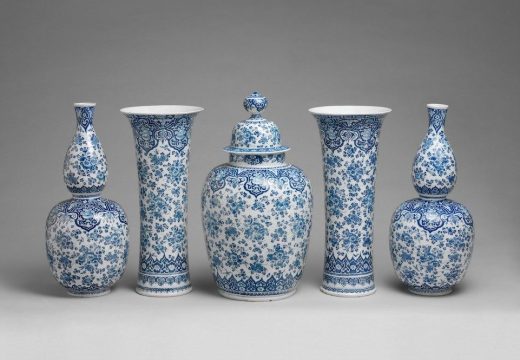
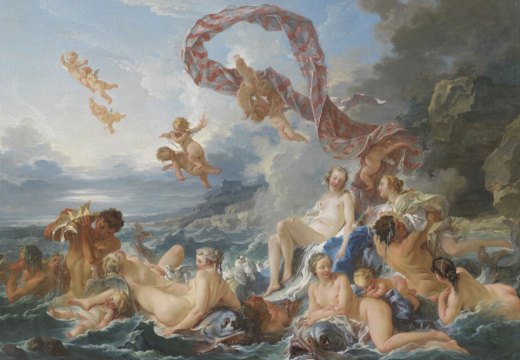
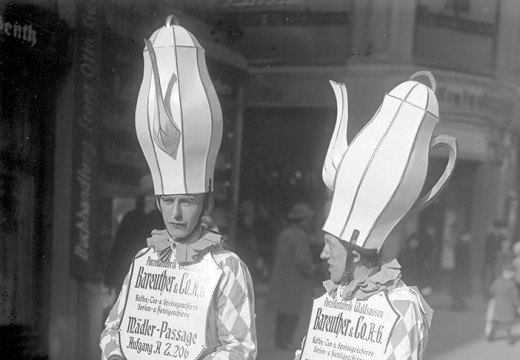









![Masterpiece [Re]discovery 2022. Photo: Ben Fisher Photography, courtesy of Masterpiece London](http://www.apollo-magazine.com/wp-content/uploads/2022/07/MPL2022_4263.jpg)
‘I am every conservator’s nightmare – that person who wants to touch the art’